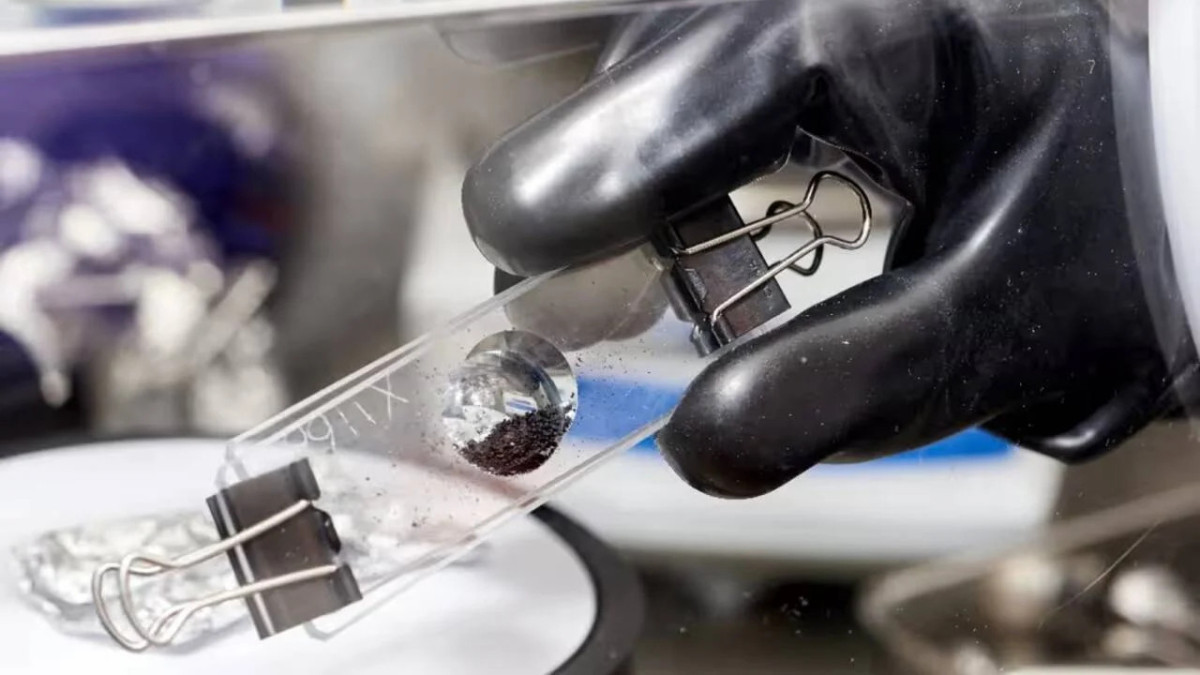Scientists analyse 4.6bn-year-old dark dust from Bennu asteroid

A teaspoon’s worth of dark dust and granules scooped from an asteroid 200m miles from Earth has arrived at the Natural History Museum in London, where scientists are preparing to unlock its secrets, El.kz cites The Guardian.
Researchers at the museum received 100mg of the pristine material, which at 4.6bn years old dates back to the dawn of the solar system, after Nasa’s Osiris-Rex mission stopped at asteroid Bennu in 2020 and returned samples to Earth in September
The spacecraft briefly touched down on Bennu, an asteroid that has a 1-in-1,750 chance of colliding with Earth in the next 300 years, and gathered more than 60g of untouched material, the largest amount brought back from space since the Apollo program.
“It’s amazing. It’s like a little treasure trove that takes us back to the start of the solar system,” said Dr Ashley King, a planetary scientist who will work on the grains at the museum. “I can’t wait to get my hands on them and see what we can learn about the early solar system.”
Preliminary analyses by Nasa researchers found that chunks of the asteroid were rich in carbon and water, with some of the carbon tied up in organic compounds. Scientists expect to study the samples for decades as they seek to understand how the solar system formed and whether asteroids delivered substantial amounts of water to Earth and other planets.
One key area of research will be to analyse hydrogen isotopes in the water bound up in Bennu to see if any of it matches that found in Earth’s oceans.
Beyond the questions of our cosmic origins are more existential matters, such as how to deflect or destroy asteroids that pose a potential threat to Earth. At a third of a mile wide, Bennu is far smaller than the six-mile-wide asteroid that spelled disaster for the dinosaurs, but it would still cause immense damage if it struck Earth.
The first two years of research at the Natural History Museum will focus on non-destructive tests, such as X-ray diffraction and electron microscopy to learn about Bennu’s mineral composition and structure. The largest grains in the sample are on the order of millimetres wide, while the smallest are mere dust particles.
“It doesn’t sound like a lot of material, but it’s plenty to work with,” King said. The museum is home to one of the world’s leading meteorite collections, and the staff are well-used to handling small amounts of extremely precious materials from outer space.
Unlike meteorites that have been baked and battered on their fiery passage through Earth’s atmosphere, the dust and rocky fragments from Bennu were brought to Earth in pristine condition, allowing scientists a rare glimpse of the unaltered asteroid.
“This material, no more than a teaspoon’s worth, will keep us busy for years as we study each minute grain to understand its composition and structure and see what secrets we can unlock,” said Prof Sara Russell, leader of the planetary materials group at the Natural History Museum.
 Subscribe to our Telegram channel and be the first to know the news!
Subscribe to our Telegram channel and be the first to know the news!